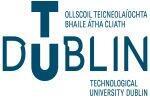Sign up to get all the latest Careers and Education news delivered to you - - >

Menu
- Home
- Guidance
- Parents
- Students
- Accommodation for Third Level Education
- Apprenticeships
- Career Events
- Careers of the Future
- Career Videos
- Climate
- CV Hints and Tips
- Cyber Security Careers
- Definitions of Acronyms
- Grants & Scholarships
- How to Prepare for Open Days
- Planning to Study Abroad
- STEM Careers
- Study Methods
- Subject Choice for Students
- Transition Year
- What the Graduates did
- Adults
- Ukraine
- Contact Us
- Recent Newsletters
Close
Menu
- Home
- Guidance
- Parents
- Students
- Accommodation for Third Level Education
- Apprenticeships
- Career Events
- Career Videos
- Careers in Horticulture
- Careers of the Future
- Climate
- CV Hints and Tips
- Cyber Security Careers
- Definitions of Acronyms
- Grants & Scholarships
- How to Prepare for Open Days
- Planning to Study Abroad
- STEM Careers
- Study Methods
- Subject Choice for Students
- Summer Education
- What the Graduates did
- Adults
- Contact Us
- Find the right info
- Ukraine
- Recent Newsletters
- Upcoming Career Events
Close










